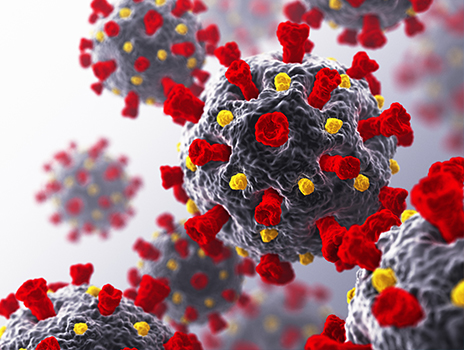October 23, 2020
The COVID-19 pandemic has been part of our daily lives for months, but constant updates, new findings and differences of opinion can still make it difficult to get clear answers to common questions.
We asked our infectious disease experts to answer your most pressing questions about COVID-19. Here’s what they had to say.
Straight from the expert
View this video to hear Dana Hawkinson, MD, medical director of infection prevention and control for the health system, answer these COVID-19 FAQs directly.
Two percent or less are asymptomatic. You can have people who are pre-symptomatic. And we know you can spread the virus, one to two days prior to any symptoms. But we anticipate a majority of patients will have some sort of symptoms, even if mild. You're probably most infectious, one to two days prior to symptoms, to several days after symptoms. And that just seems to be one of the unique natures of this disease and this infection.
The CDC has recommended that you use a face mask. Even if it's a cloth face mask, to really try and help reduce the spread that you may have it to other people who don't have it. There are many laboratories that are looking to produce antibody tests. And if they are sensitive and specific enough for COVID-19, so that we know that if you have a positive antibody test, you've actually had infection with COVID-19.
And if you've had a negative test that you haven't had it. We need to understand that and make sure that these are very good validated tests in that sense. If they can be validated and provide us that information, they will all be very helpful. But we need to wait and see.
We all have to be vigilant and adhere to public health guidance. We need to really try and stop the spread even more now, as we open up and become more interactive with other people. And the ways to do that are very simple.
Don't go out if you are sick or having symptoms, only go out if you need to, wash your hands frequently by using soap and water or hand sanitizer and do not touch your face. This is especially going to be important if you're out in public, or if you have a mask on.
If you do happen to have a cough or sneeze, do that into your elbow or to your shirt. In addition to continuing to maintain physical distance, at least six feet apart from people. 80% or more of people are going to be okay to stay at home and treat themselves at home. But there is that other subset of the population, which will have to go to the hospital, and even a smaller subset of the population, which will have critical illness and have to go to the ICU.
Even though that is a small percentage, we have to understand that this virus seems to infect a large number of people that can very easily overwhelm our healthcare system, such as hospital rooms, ventilators and personal protective equipment for our patients, as well as our healthcare workers.
